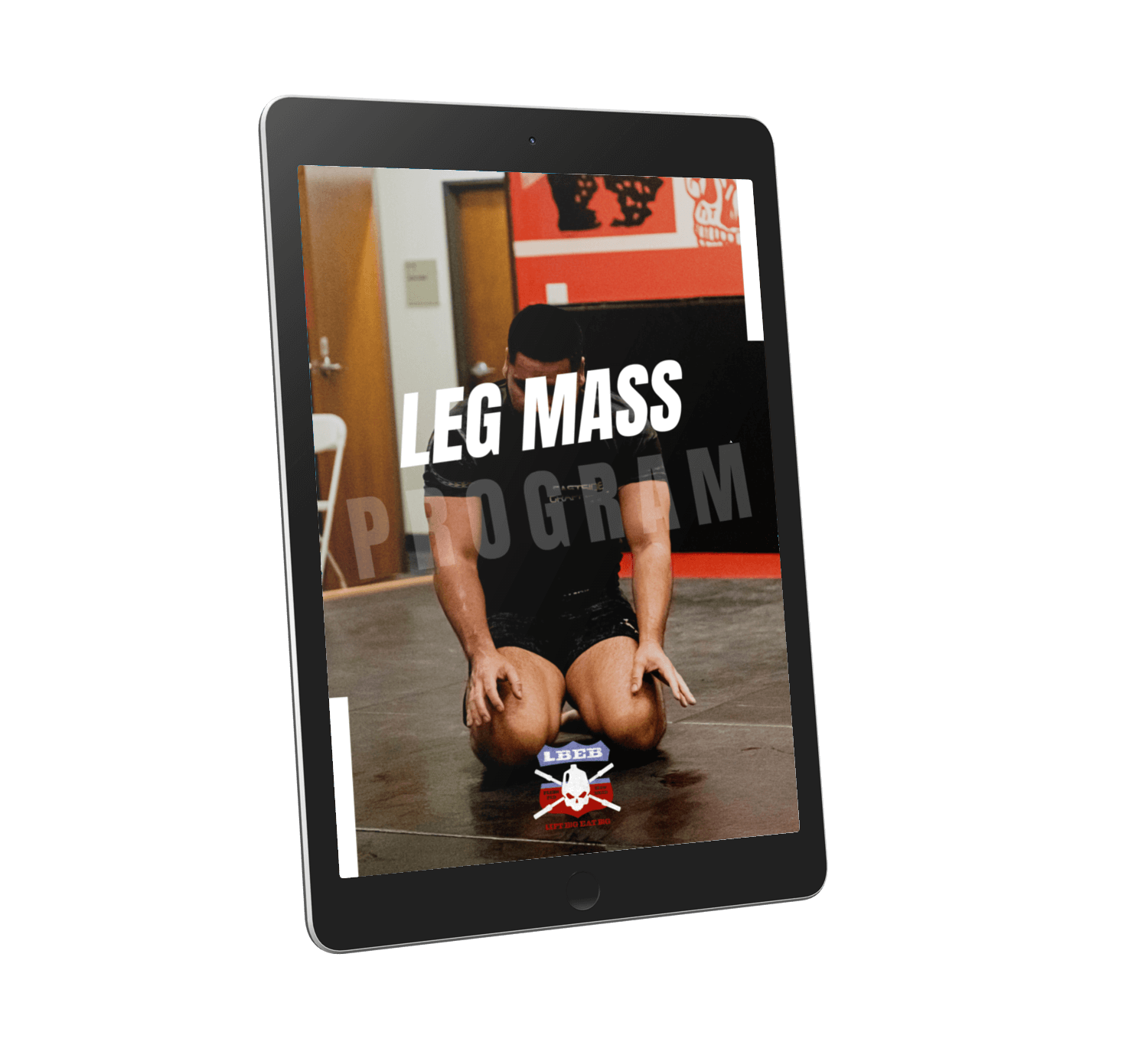Big squatters have a wide range of calf sizes. Some skinnier squatters have stick legs, while the big boys can possess some epic calf muscles. Is it the squat that builds huge calves, though?
Squats don’t work the calves significantly as there is very little ankle plantar- and dorsiflexion. As the calves primarily plantarflex the ankle, the calves aren’t activated to a great degree.
If squats don’t work calves, then what exercises do? And how can you structure your training to maximize calf development while performing squats?
Table of Contents
Do Squats Work Calves?
Squats do not work the calves and should not be relied on to develop them. Building big calves requires targeting the soleus and gastrocnemius muscles through a full range of motion. As the calves are prime movers of ankle plantarflexion, you need to perform various seated, and standing calf raises.
This is because standing calf raises primarily target the gastrocnemius and the seated calf raise shortens the gastrocnemius allowing the soleus to perform most of the work. Squats only take the ankle through a small range of motion, and maximal plantarflexion (standing onto your toes) doesn’t occur.
Muscle activation data shows that the calves are barely activated during the squat because of this [1].
Which Squat Is Best For Working The Calves?
There is one squat variation that can be useful when wanting to work your calves. However, this will be in an isometric fashion and strengthens your feet more than building your calf muscles. It’s the Hindu squat.
The Hindu squat is performed while standing on your toes, challenging the calves as you descend and ascend. While it’s not going to turn your calves into rock-hard diamonds, they’ll be damn strong, especially as you start loading the Hindu squat. Here’s how to do it:
- Start in your typical squat position. However, as you descend, you will come onto your toes, raising your heels off the floor. This will force your knees forward.
- While maintaining an upright torso, touch your heels with your hands.
- As you push with your legs, swing your arms forward and finish with flat feet.
What Do To Instead To Work Your Calves
Instead of changing your squat to work your calves, perform isolated calve exercises before or after you squat. That way, you get the best of both worlds. Here are the two main variations you’ll want to use.
Standing Calf Raise
The standing calf raise has many variations depending on the available equipment. Standing calf raise machines are great, but if you don’t have one at your gym, you can replicate it in a Smith machine and an aerobic step.
If none are available, I prefer single-leg standing calf raises. You can support yourself with the opposite arm and hold a dumbbell in the other hand. It’s more challenging than it looks!
Then you have the famous donkey calf raise with the iconic picture of Arnold Swarzenegger bent over with girls sitting on his lower back and hips.
Whichever you choose, the most crucial factor when performing any calf raise is to pause at the bottom of the stretch for at least 3 seconds. The biggest mistake is bouncing out of the stretch when your goal is stimulating calf muscle growth.
Bouncing uses the stored elastic energy within the tendon from the descent, so the calves don’t need to produce as much force to plantarflex the ankle. The elastic energy dissipates as heat by pausing, and standing onto your toes becomes muscular-driven.
Here’s how to perform the standing calf raise:
- Stand on the edge with the balls of your feet on an elevated platform.
- Drop your heels as far as possible, so you feel an intense stretch up the back of your legs.
- After pausing for 3 seconds, stand on your toes and hold the top for 1 second. Slowly descend into the calf stretch.
Seated Calf Raise
Like the standing calf raise, pause at the bottom for 3 seconds to target the calf muscles. A seated calf raise machine is your best option for loading the soleus muscle. However, not all gyms have them; if you train at home, you likely don’t have one.
You can perform a modified version by sitting on a bench and placing the balls of your feet on plates. To load it, rest dumbbells on your quads near your knees. This is a great substitute. Here’s how to seated calf raise:
- Sitting on the seated calf raise machine or a bench with your feet elevated on plates, drop your heels into the stretch.
- Hold the stretch for 3 seconds, then push onto your toes. Flex at the top for 1 second and slowly descend into the calf stretch.
Summary
Squats don’t work calves to any significant degree and should not be a priority when squatting. Instead, use the squat to build lower body strength and size of your quads and glutes. Supplement the squat with various calf raises, and you’ll have diamond calves.
Grow Enormous Legs That Won’t Fit Your Jeans
A leg specialization program to bust through muscle growth plateaus and finally throw away those skinny jeans.
References
1. Krzyszkowski, J., & Kipp, K. (2020). Load-dependent mechanical demands of the lower extremity during the back and front squat. Journal of Sports Sciences, 38(17), 2005-2012.

